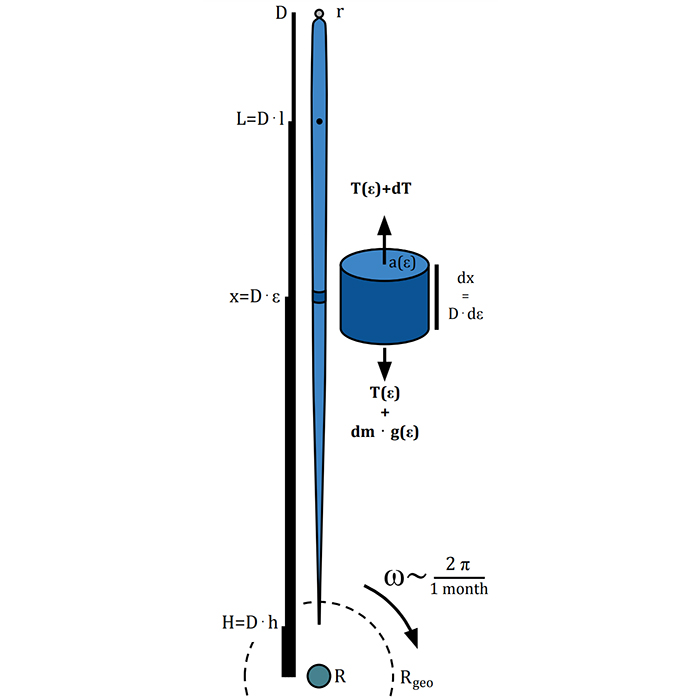Getting spacecraft into orbit is incredibly costly and difficult, and so scientists keep returning to the idea of a space elevator that can lift people and equipment out of Earth's atmosphere more easily. Now researchers have come up with a twist on the concept that - in theory at least - is doable with today's technology.
Rather than building a space elevator up from Earth, build a 'spaceline' down from the Moon, say astrophysicists Zephyr Penoyre from the University of Cambridge in the UK, and Emily Sandford from Columbia University in New York.
Based on their calculations, the researchers say such a construction is technically and economically feasible with the tools and materials we have today – something that can't be said for the space elevator concept.
The benefit of a spaceline over a space elevator is that it would orbit Earth just once a month – because it would be attached to the Moon, not Earth – and that means less of a strain coming from centrifugal forces.
It wouldn't actually touch our planet, but dangle down into geostationary orbit – some 42,164 kilometres (26,199 miles) above the surface – ready to transport whatever was needed up into the further regions of space.
"By extending a line, anchored on the moon, to deep within Earth's gravity well, we can construct a stable, traversable cable allowing free movement from the vicinity of Earth to the Moon's surface," write Penoyre and Sandford in their paper.
"It would reduce the fuel needed to reach the surface of the moon to a third of the current value."
Crucially, super-strong materials that we already have, including the Zylon carbon polymer, would work in this scenario.
By hitting what's known as the Lagrange point – where the gravitational forces of the Earth and Moon would come close to balancing each other out – the researchers think enough stability for operations can be achieved.
 (Penoyre & Sandford, arXiv.org, 2019)
(Penoyre & Sandford, arXiv.org, 2019)
There would be some kind of 'base camp' here, the researchers say:
"Such a base camp would allow construction and maintenance of a new generation of space-based experiments – one could imagine telescopes, particle accelerators, gravitational wave detectors, vivariums, power generation and launch points for missions to the rest of the Solar System."
The counter weight of a base camp would also help keep the long cable anchored and stable – it will need to stretch more than 300,000 kilometres (186,411 miles), after all.
As an added bonus the risk of getting hit by space objects (like meteors) is low, and the cable could be manufactured to withstand small hits, the researchers suggest.
The idea of a lunar spaceline isn't brand new, but this latest study shows that it's now feasible in terms of cost and practicality. It's worth bearing in mind that this is only a proof-of-concept though, and the work has yet to appear in a peer-reviewed journal. It's been uploaded for feedback from the industry on pre-print server arXiv.org.
In other words, work on a spaceline isn't going to get underway anytime soon, unfortunately. But it might give us a more viable alternative for low-cost space exploration than the space elevator – and at least the maths checks out.
"We have calculated the tension and stresses on the spaceline, and showed that with modern materials it could be constructed within the fundamental limits of the materials," conclude the researchers.
The research is available on pre-print server arXiv.org.
